I’m writing this blog to discuss how often you need to be doing yoga in order to get noticeable results, but I also cover related information to help you understand more specifically how to make yoga work for you and your goals.
This blog includes:
- Results You Can Expect From Doing Fitness-Centric Yoga Consistently
- How Often You Should Do Yoga
- (If yoga isn’t your only workout, AND if yoga is your only workout)
- What exercises fall into the category of yoga?
- Common Uniting Themes of Yoga Exercises
- If Yoga Is NOT Your Only Workout – How often should you do yoga?
- Benefits You Can Expect By Adding Yoga To Your Workout Routine
- # Of Minutes & Yoga Workouts Per Week
- What Should Your Yoga Workouts Focus On?
- Sample Yoga Workout Schedule
- How To Easily Fit Yoga Into Your Existing Workout Schedule
- If Yoga IS Your Only Workout – How often should you do yoga?
- # of Minutes & Yoga Workouts Per Week
- What Should Your Yoga Workouts Focus on?
- Recommendations For Those Who Only Do Yoga
Results You Can Expect
With a fitness-centric yoga program, you can expect noticeable results -mostly in your overall physical feeling, energy & stress levels, and its impact on your other fitness activities – within your first month. (People who do Man Flow Yoga consistently usually report noticeable improvements after their first ten consistent workouts).
Following an effective yoga program over time can yield even more significant results, including:
- Increasing flexibility and mobility
- developing core strength & body awareness
- dramatic weight loss
- improved body composition
- building muscle mass
And much, much more – especially when combined with effective dieting & nutrition, sleep, and stress management.
How Often You Should Do Yoga
How often you’ll need to do yoga depends on a variety of factors, including:
- Your existing workout routine (if any)
- Your fitness goals
- Your current fitness level
- And probably a few more minor things I won’t mention here.
My recommendation, based on the people that I’ve worked with in person and the thousands of people that I’ve trained through my online programs – is the following:
If yoga is NOT your only workout, complete at least 2-3 yoga sessions per week for a minimum of 60-100 minutes of yoga per week. The yoga you do should focus on aspects of fitness NOT covered in your other workouts, typically including: mobility, flexibility, balance, breathing, restorative stretching, and body awareness.
If yoga is your only workout, aim for at least 20-30 minutes of yoga, 6 days per week. If necessary, you can start with 3 days per week for your first month. As your fitness level increases, you can increase that to 40-70 minutes per day. (Be sure to also include essential exercises NOT included in yoga, such as pulling or rowing exercises, overhead press, and grip strength – I’ll go into deeper detail about this subject in the “If Yoga Is Your Only Workout” section below.)
There are more considerations than these, but without going into too much detail to address the millions of individual fitness situations, these are the most important to keep in mind.
What do you mean by “yoga”?
The other part of this is understanding what I mean when I say “yoga”. By yoga, I’m really just referring to any of the movements I would practice with Man Flow Yoga. This includes more than just traditional yoga postures.
It also includes mobility work, self-myofascial release, isometric holds, physical therapy exercises that help with recovery & injury-prevention, and certain bodyweight exercises or calisthenics.
Depending on your workout goals, yoga (or Man Flow Yoga) can serve as a:
- Muscle-activating warm-up for before any workout
- Stretching session for the morning, mid-day, or evening
- Injury-prevention or injury-recovery workout drawing inspiration from physical therapy exercises to target specific problem areas like low-back, spine, hips, knees, or shoulders
- Restorative / yin yoga to prepare your body for a great night’s sleep
- Standalone workout to improve endurance, mobility, flexibility, & balance
- Cool-down from other workouts to decrease recovery time & prevent joint-pain related to soreness
- A combination of stretching and strengthening to get rid of discomfort, aches, and pains, while also building strength and mobility to address the root causes of physical issues
- And many more uses…
So as you can see, yoga in this sense doesn’t just refer to typical vinyasa or flow classes – it refers to many types of movement and exercise.
Looking For A Program?
If you’re looking to start a yoga routine to lose weight, gain muscles, flexibility, and strength, Man Flow Yoga offers on-demand structured programs that complement your lifestyle and schedule. Sign-up below!
Signup for the FREE 7-Day Challenge
The common uniting theme in these exercises is focus and attention on the following:
- Proper muscular engagement – ensuring you are using the appropriate muscles correctly; lengthening (extending) certain muscles while tightening (flexing) the opposing muscles groups
- Slow, controlled breathing – using your breath to complement your movements; inhaling to lengthen or extend, and exhaling to deepen or contract
- Body awareness – developing your proprioceptive ability; perception of your body and its movement; constantly checking in with your body to ensure you are feeling the exercise correctly.
- Continued refinement of proper technique – using your body awareness to continually improve your technique; immersing yourself in the exercise (without outside distractions).
To sum it up, “yoga” refers to bodyweight exercises to improve your fitness through a combination of strength, flexibility, mobility, balance, and/or recovery, while also focusing on breathing, body awareness, and proper technique.
On a personal note, I want to mention that I cannot speak for all yoga types. The type of yoga that I do with Man Flow Yoga is very focused on active range of motion, proper muscle engagement, and strength. This is not the case with all types of yoga, as most tend to focus on passive stretching instead of active mobility. Results from Man Flow Yoga are more significant, when compared to typical yoga classes, and results will differ from instructor to instructor – not to mention TYPE of yoga (flow/vinyasa, Bikram, hot, yin, etc…)
If yoga is NOT your only workout…
If you’re a yoga beginner, and looking to get the minimum effective dose of fitness-centric yoga to help with your existing workout routine, you’ll want to aim for 60-100 minutes of yoga per week.
What should your yoga workouts focus on, if yoga is NOT your only workout?
When practicing yoga or doing your yoga workouts, you’ll want to focus on the aspects of fitness involved in yoga that you are NOT typically getting from other workouts, including:
- Mobility – typically referred to as strength in extended range of motion; the ability to work deeper into an exercise while still exhibiting strength
- Flexibility – passive range of motion; the ability of muscles to your muscles to lengthen, but not necessarily to apply force in extended range of motion
- Balance – the (1) strength of balancing, and the (2) skill of balancing
- The hip strength, core strength, and ankle stability required to balance
- The ability and body awareness of balance that comes with regular practice
- Isometric strengthening – “holding” a posture or static exercise while building strength, maintaining proper technique, and resisting the urge to give up
- Muscle engagement / body awareness – improving your motor control and developing neural pathways between your brain and your muscles to improve your ability to activate certain muscle groups (most people have issues with their hips, glutes, core, and scapular stabilizers as a result of sitting too often as a desk & general inactivity)
- Breathing – focused attention on your breathing and the relationship between movement and breath; using your breath to work deeper into an exercise, to slow it down and control your body so you can hold the posture for longer, and maintain composure – especially as your strength starts to falter or you work outside your comfort levels
- Passive flexibility & recovery stretching (releasing muscular tension) – training to improve your passive range of motion; using a combination of breathing, proper technique, and repetition that facilitates lengthening of the muscles (and thereby, increasing flexibility, relieving pressure on the joints from muscle tightness, and speeding up muscle recovery)
What will you get out of this?
- Improved performance in your other workouts – you’ll be able to lift more and perform the exercises with better technique; movements feel smoother and you’re not as sore afterwards
- Improved recovery & workout consistency – more flexibility means quicker recovery, and adding in a bit of restorative work will help you keep your body feeling fresh and more capable of sticking with a consistent workout schedule.
- Decreased risk of injury – more core strength, increased mobility, decreased soreness, and more body awareness means you’re avoiding the main causes of preventable injury.
- Better sleep & decreased stress – There’s something magical about holding a posture, focusing on your technique, and breathing. It’s a natural physical response that occurs when you focus simultaneously on your body and slowing down your breathing.
I know that 60 minutes may seem like a lot. Especially if you already have a packed schedule. But realistically, you won’t have to change your existing workout routine drastically in order to hit this goal. Doing some simple math, 100 / 7 = just over 15 minutes per day; and even with just 10 minutes of Man Flow Yoga per day, I can assure you that you’ll feel noticeable results in your first month.
Just so you can an idea, here’s a sample recommendation on how to distribute 100 minutes of yoga on a weekly basis:
- Yoga Session 1: 30-40 minutes of strength-focused yoga workout of medium to high intensity, focused on mobility, balance, endurance, and isometric strengthening
- Yoga Session 2: 10-15 minute morning yoga session to relieve aches & soreness, prepare your body & mind for the day, and reinforce proper posture (this still leaves you with time to do another workout immediately afterwards, or a separate workout in the afternoon or evening)
- Yoga Session 3: 15-20 minutes of restorative yoga, done immediately after another workout as a cool-down, or the day afterwards, with a goal of releasing muscle tension & decreasing joint inflammation
- Yoga Session 4: 15-20 minute strength-focused yoga workout to increase mobility, build muscular awareness, and improve balance (can stack this with another workout, or do this in the evening, reserving your morning for another workout)
- Yoga Session 5: 10-15 minute evening routine to help wind down from work, relieve muscle tension, undo stress from sitting at a chair, and sleep better.
- Yoga Session 6: 10-15 minute warm-up session for another workout, focused on muscle activation, core strength, and balance to improve performance, decrease discomfort during your workout, and prevent injury
There are many ways to incorporate yoga into your daily schedule:
- 5-10 minutes of stretching during your lunch break
- 10-15 minutes of yoga for a morning routine
- 10-20 minutes of yoga before bed
- 20-40 minute yoga workout of medium intensity
- 30-60 minute yoga workout of medium-high intensity
- Quick, 15-25 minute medium-high intensity yoga workout
(If you’re looking for ideas on what these yoga workouts look like, the Man Flow Yoga Workout Library has 300+ exclusive workouts you can search for using the following filters: keywords, duration, skill level, intensity, target area, and fitness focus. Get access to all with a $1 7-Day Trial. You can also check out my YouTube channel to see select workouts and clips.)
Try to aim for 2-3 challenging yoga sessions weekly.
However you fit these 100 minutes into your schedule, I highly recommend at least 2-3 yoga sessions per week where you are really challenging yourself with yoga. The most effective way to do this is by doing a medium or high-intensity yoga workout that focuses on:
- Improving active mobility (building strength in extended range of motion)
- Balancing postures that help you increase body awareness, endurance, and strength
- Isometric exercises to help you increase muscle engagement & body awareness
By doing 2-3 yoga sessions per week, you’re ensuring you’ll get noticeable results from your fitness-centric yoga program. If you’re new to yoga, I’d recommend doing more sessions on a weekly basis. If you’ve been doing yoga for years and are now combining yoga with other workouts, 2 sessions will still be incredibly helpful.
Yoga makes it easy to double up on workouts for the day.
Yoga tends to also not be as draining as resistance training or high-intensity workouts, which means you can do yoga in the morning or evening, and then do another workout at the opposite time of day. (I’d recommend spacing your workouts at least 6-8 hours apart.) You might be more sore than you’re used to initially, but if you’re a relatively active person then it’ll be easy for you to do a yoga workout shortly after waking up in the morning, followed by another workout in the afternoon or evening.
So if you’re wondering about how often you should be doing yoga, and how to incorporate into the workouts you’re already doing, hopefully now you have a pretty good idea of how to do that!
I encourage you to follow a structured program and make that easy to do by joining the Man Flow Yoga Community! Click here to learn more about the Members’ Area, and get instant access to 35+ workout programs, 320+ workouts, tutorials, wellness videos, and more!
If yoga is all you do…
If yoga is your only form of exercise, there’s no reason why you can’t do yoga on a daily basis. You can use a combination of strength-focused workouts and restorative sessions, so you can address whatever your fitness needs of the day may be. Whatever you choose, if yoga is your workout, my recommendation is that you do at least 30 minutes of yoga per day.
If you’re feeling extremely sore from a yoga session the day before, it might be a good day to do a restorative yoga session focused on relieving muscle soreness and joint inflammation. If you’re feeling a little sore but had a great night of sleep, your body is probably ready for another strength-focused yoga session.
What should I focus on if yoga is my ONLY workout?
If yoga is your only workout, following along to a traditional yoga program is NOT something I would recommend. The problem is that a traditional yoga workout does not do enough to help you build strength, and even though your muscles are probably flexible, you want to have a certain amount of muscle tension for functional day to day fitness, as this helps to prevent injury and enables you to complete physical tasks.
If yoga is your only workout, you’re probably already doing enough flexibility work, balancing, and spinal mobility exercises that I won’t need to address it here. However, there’s a lot that you are likely missing, so you should be sure that your yoga workouts are addressing the following:
- Reaching muscle failure – It’s important to challenge your body to the point of failure. If you hold the pose and you don’t get tired, you’re not going to get stronger.
- Challenging yourself from a strength perspective – By this, I mean doing exercises or postures in which you can only hold the exercise for a few seconds, or complete fewer than 5-10 reps at your maximum effort. This load on your body is what allows you to build strength, and this helps with bone density, injury-prevention, healthy hormonal levels, and even with sleep. Some examples of this include 1-leg chair pose, crow pose.
- Avoiding excessive forward folds – This is a big mistake in most yoga classes. There are too many forward folds, and not enough backbends. Most of us are sitting or being inactive throughout the day, and while inactive, we are rounding or spines; doing exactly what we do in a forward fold. In order to counter this, we should be doing MORE backbends – not less. Excessive forward folding can lead to lower-back injuries and chronic low-back pain, and this is well-documented within the yoga community – even with yoga instructors!
- Building active mobility – Passive flexibility is a start, but eventually you’ll want to build active mobility on top of that passive flexibility. An example of this is using a strap to hold your leg straight out in front of you. This is considered passive. Removing the strap and using the strength of your hips and core to hold your leg straight out in front of you, on the other hand, is considered active mobility. You’ll want to incorporate this concept into your yoga practice in order to keep your joints healthy, build strength, and prevent injury.
- Supplementing with pulling exercises – There’s no nice way to put this, but if you aren’t doing pulling exercises in addition to your yoga workouts, your shoulders are going to end up with issues. It’s the same with bodyweight exercises without equipment – there’s now way to mimic a pulling exercise with resistance unless you have some sort of resistance. It’s like doing a pull-up without actually having to pull yourself up. Sure, you can squeeze those muscles involved, but it’s not actually going to create enough resistance to build strength. This leads to weakness in the upper-back and shoulders that can cause significant shoulder or rotator cuff discomfort, which can lead to chronic pain or injury.
What time of day should I do yoga?
You can do this in the morning, in the evening, or whenever is convenient for you. My only precaution would be to avoid doing a very challenging or intense strength-focused yoga session in the hours leading up to bed. Generally, you’ll want your workout finished by 5 or 6 PM. (However, if working out later is your only option due to work and family obligations, then working out in the evening is fine.) Based on my conversations with people who use my training programs on the Man Flow Yoga Members’ Area, it’s best to establish a habit of doing your workouts in the morning. That way, if something comes up, you’re already finished with your workout.
My Recommendation: Add Specific Resistance Training
To those only doing yoga, I strongly encourage you incorporate strength training into your weekly routine. These exercises are what you should be doing at a minimum if you want to continue doing yoga and avoid injury:
- Vertical Rows (Lat Pull-Downs, Pull-Ups, Etc)
Builds strength in arms (Biceps), back (lats, rhomboids) and shoulders (traps) - Horizontal Rows (Bent Over Dumbbell Row, Cable Rows, Etc)
Builds strength in scapular stabilizers (Rhomboids & Traps), arms (Biceps) - Hammer Curls, Biceps Curls, or Grip Strengthening Exercises
Builds grip strength, strengthens wrists, prevents wrist injury, increases life expectancy (grip strength plays a huge factor in this)
I also recommend that you also incorporate strength training focusing on compound movements into your training routine, but this is not absolutely necessary unless you want to build more muscle, lose weight, or improve your functional fitness. You can get by with yoga and the resistance training exercises mentioned above, but for best results, you should incorporate yoga with resistance training.
I understand that you many have had issues with resistance training in the past.
Trust me, I was one of those people. But that was because (1) I wasn’t following a balanced training plan, and (2) I didn’t have the necessary mobility, core strength, and body awareness to do the exercises properly.
By following along to Man Flow Yoga programs, you’ll develop the strength to do resistance training without pain or fear of injury. My Strength Foundations Course in particular has been incredibly effective at helping to address this issue.
Why not JUST yoga?
The problem with only doing yoga is that it might not place the necessary stress on the body required to help you build muscle and improve body composition. It also lacks pulling exercises like pull-ups and rows, and doesn’t do much overhead resistance training to build strength in your shoulders and upper-back.
I’ve seen and spoken with plenty of people who do yoga on a daily basis, who push themselves, sweat a ton, and leave their workout feeling satisfied, but are still not satisfied with their overall fitness. They wish they had more muscle, less fat, and many have pain in their joints as a result of too much stretching (this particularly occurs in the lower-back), or pain in their shoulders from not enough pulling or scapular stability work.
If you are doing yoga because strength training and higher-impact workouts leave your body aching and/or in pain, make sure that you are doing yoga with an emphasis on building strength and developing mobility – this will not only help you retain muscle mass and strength, but will also help you develop the core strength and mobility to engage in strength training or similar workouts WITHOUT pain.
In Conclusion
Whether you’re doing yoga on its own, or you’re adding yoga into your existing workout program, there is a minimum amount of yoga you should be doing on a weekly basis in order to experience noticeable results.
When I refer to “yoga”, it doesn’t just mean yoga postures.
It can also include exercises you might see in calisthenics, physical therapy, isometric strengthening, self-myofascial release, mobility work, stretching, and many more fitness disciplines. To sum it up, “yoga” refers to bodyweight exercises to improve your fitness through a combination of strength, flexibility, mobility, balance, and/or recovery, while also focusing on breathing, body awareness, and proper technique.
If yoga is NOT your only workout, you should aim to add 2-3 weekly yoga sessions and 60-100 minutes of yoga per week.
You should be doing yoga in a way that addresses aspects of fitness your other workouts do NOT. This usually means: mobility, flexibility, balance, isometric strengthening, muscle engagement / body awareness, breathing and passive flexibility & recovery stretching. And because of the low/no-impact nature of yoga, you can easily fit it into your existing workout routine, without drastically reducing your other workouts.
If yoga is your only workout, you should aim to do yoga daily, or at least 5-6 times per week.
Build up to at least 30 minutes per day, and when time allows, feel free to do longer sessions as well. It’s easier than you think to make time for yoga, since it doesn’t require equipment and you can pretty much do it anymore, so I encourage you to be optimistic about hitting that 30-minute mark. Since there’s so many different ways to do yoga, you can do yoga in a way that complements whatever you’re feeling that day, so you won’t have to skip workouts.
I do recommend supplementing your yoga workouts with exercises that address aspects of strength that yoga cannot accomplish. This includes a minimum amount of pulling and grip-strengthening exercises at least 2x per week. This will help to prevent injury in your shoulders and rotator cuff, and enable you to keep practicing yoga consistently, without pain.
Thank you for reading my blog on “How Often Should You Do Yoga”. I hope it was informative, and you feel confident and ready to yoga as consistently, so you can get results from your time spent on the mat.
About the author, Dean Pohlman, Founder & CEO of Man Flow Yoga, Author of Yoga Fitness for Men, Expert on Yoga Fitness for Men.
Looking for non-spiritual, yoga for men workouts?
Learn More About Man Flow Yoga and how it can help you with your fitness goals:
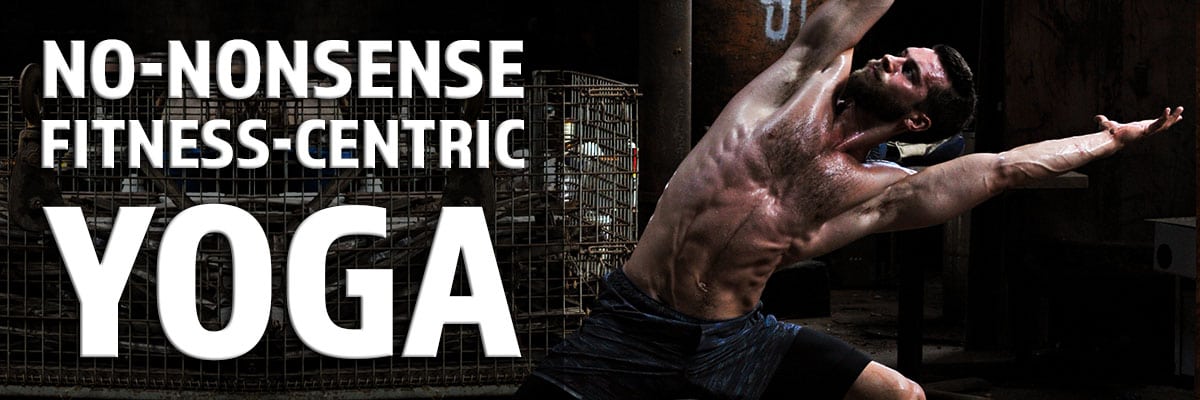 Join Today for Instant Access!
Join Today for Instant Access!
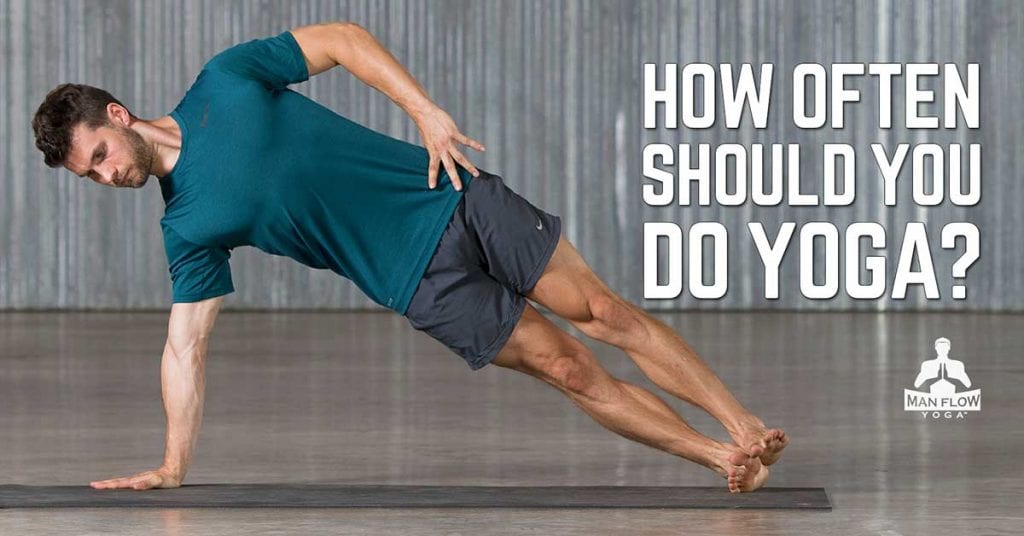

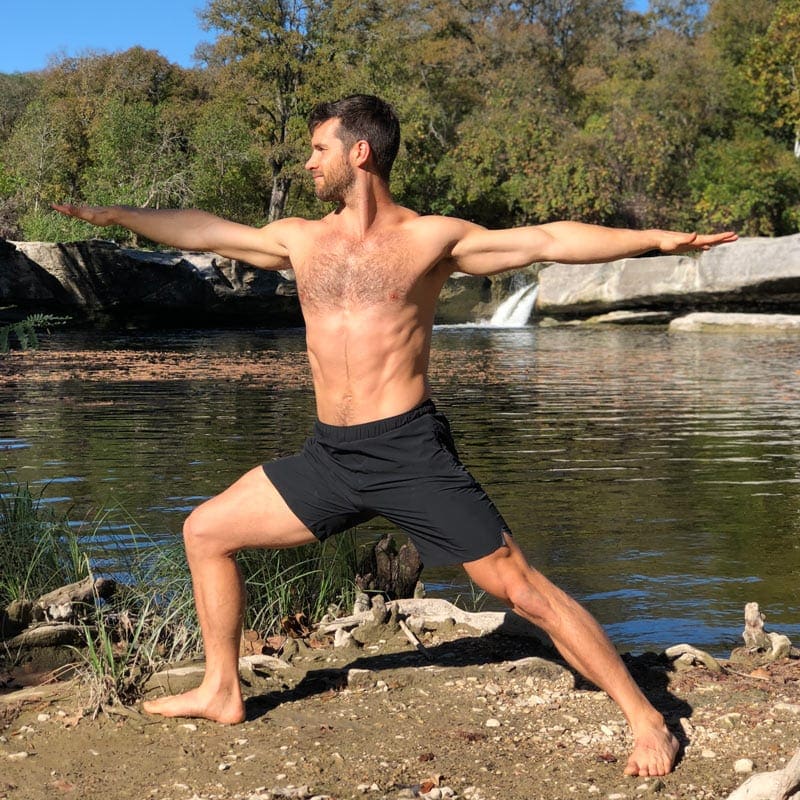
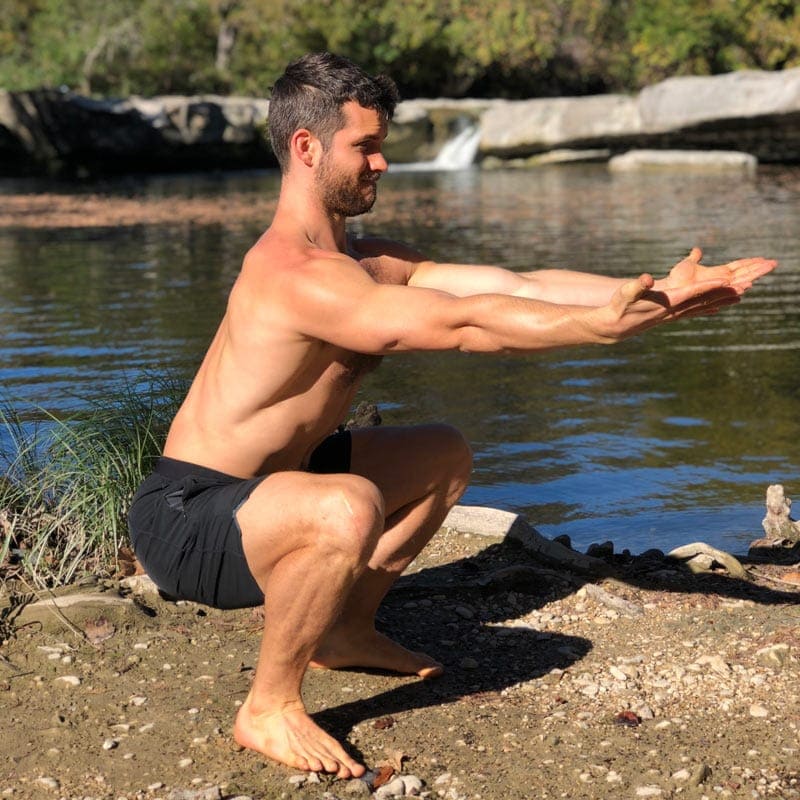
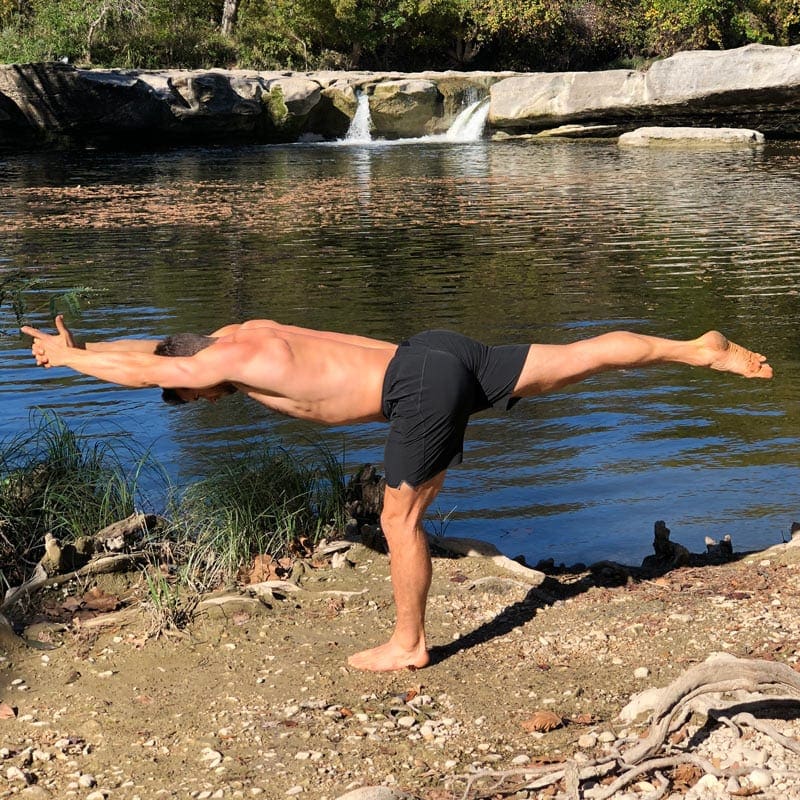


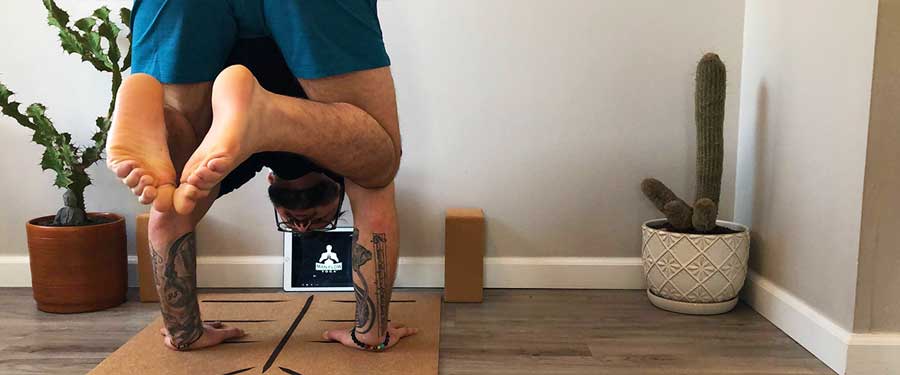
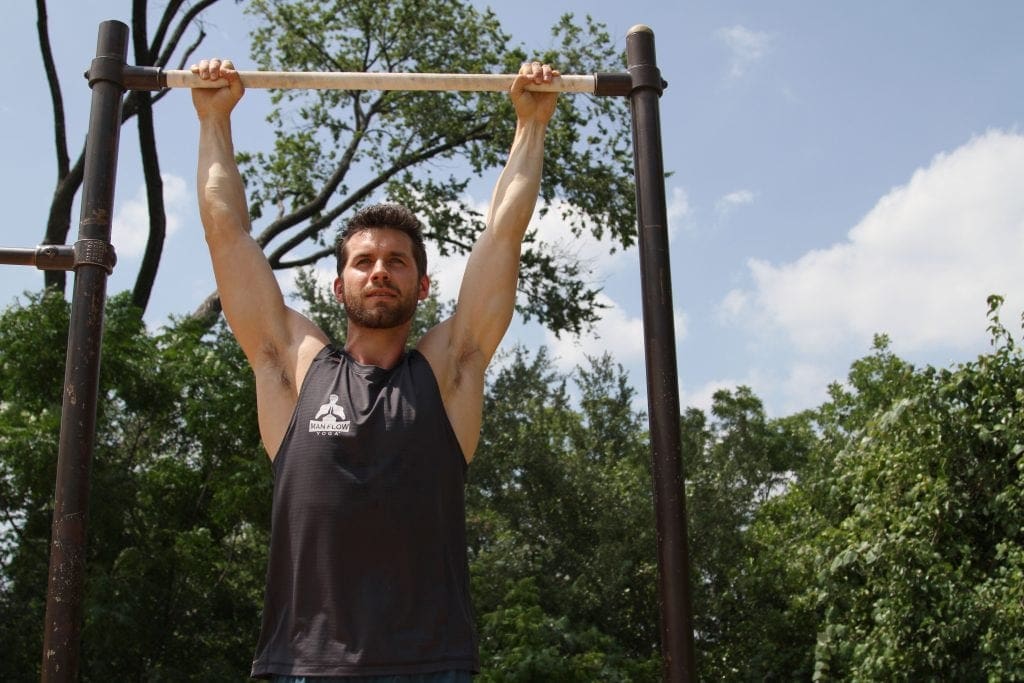
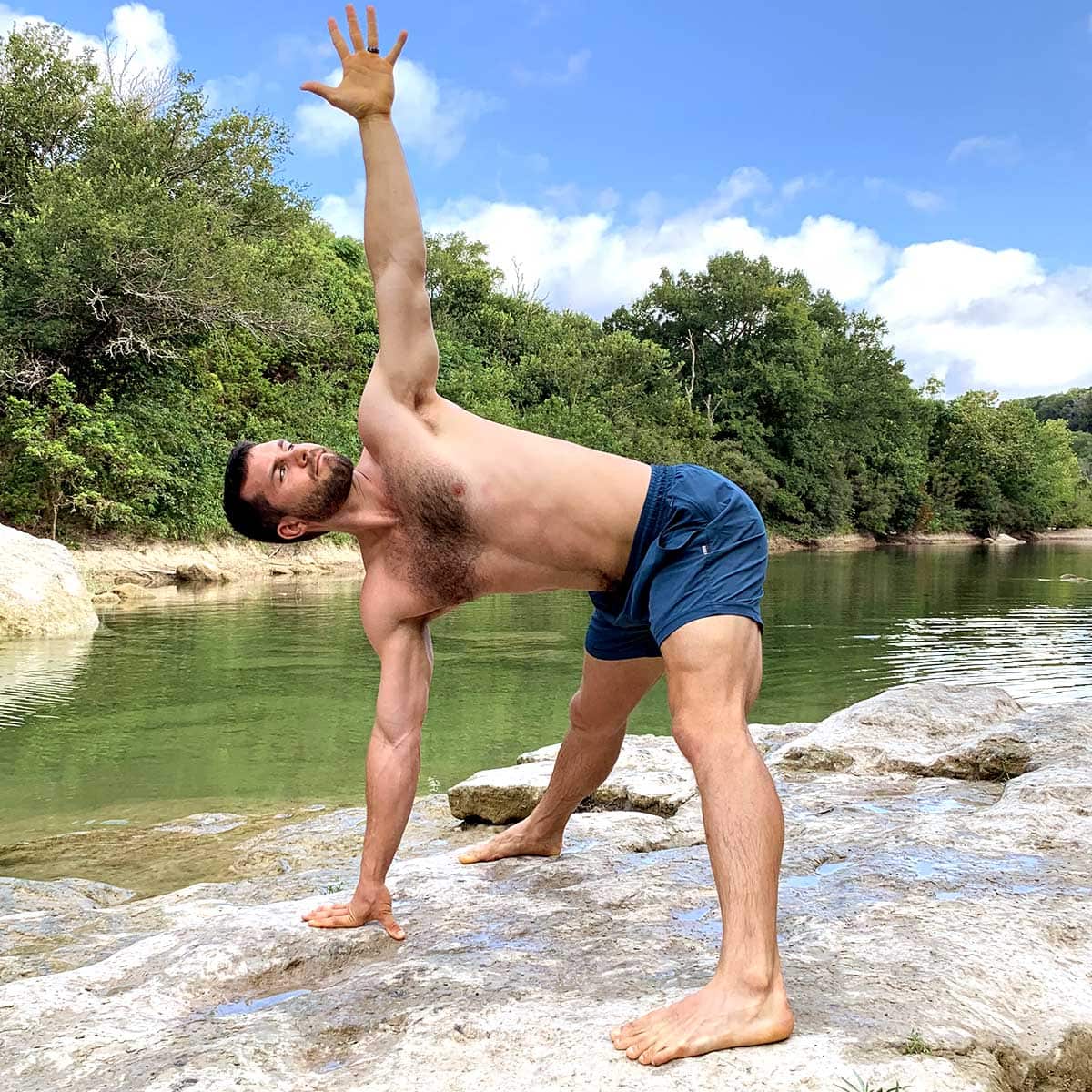
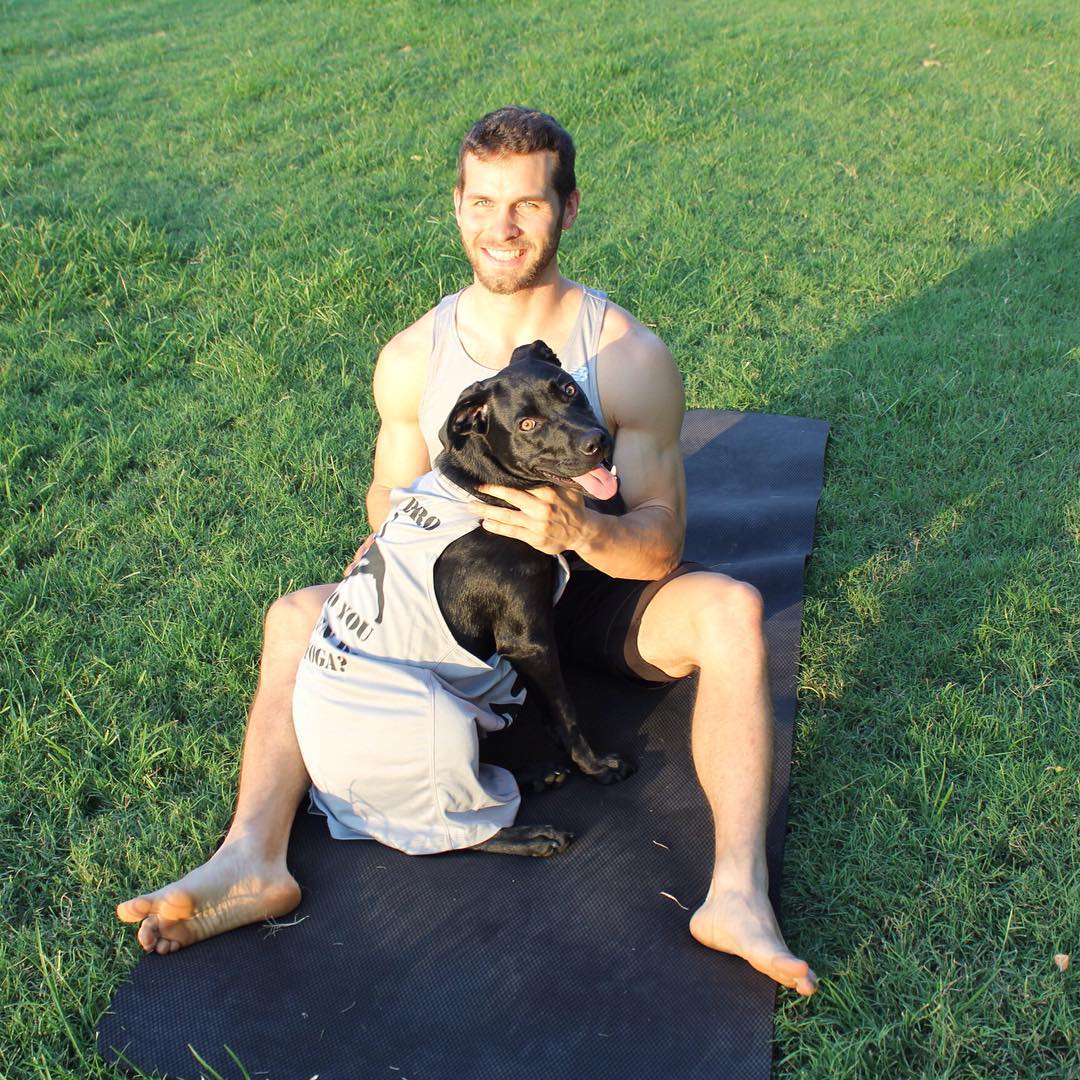
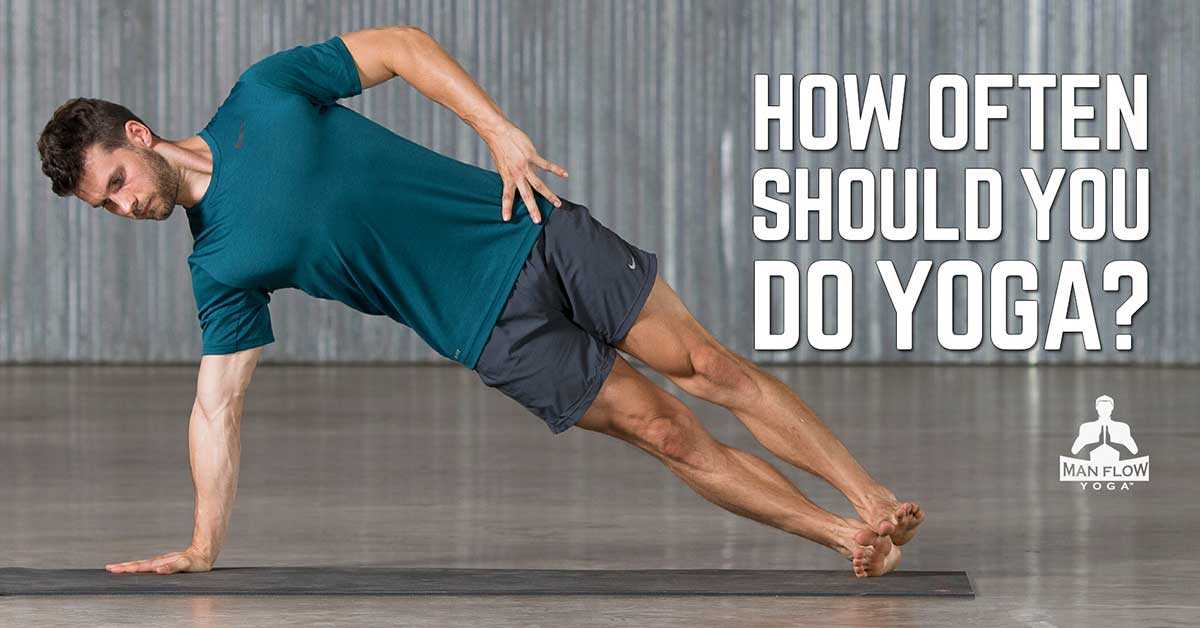
Well written, easy to understand and very informative! Thank you for enlightening us in such a professional way!
Thank you, Frank. Glad you found it helpful. And yes, I don’t know why it wouldn’t be professional!
Great article Dean, I’m thinking of moving towards only Yoga so this is very helpful!!!
David – glad it was helpful! As you can see in my blog, I’d highly recommend you keep doing other exercise, for the sake of your shoulders.
This is great and answers many of the questions I had as I am new to incorporating Yoga into my fitness routine… thanks Dean! One thing I am still wondering though is if there are any issues with doing Yoga on days when I have muscle soreness from lifting?
Andrew – muscle soreness doesn’t meant you stop exercising. It just means you worked out and your muscles are recovering. You can absolutely do yoga on days after lifting – I encourage it! You might not want to do a super intense yoga workout, but you should definitely do some restorative yoga.
What about cardio?
Cardio is cool. Do it twice per week for 20 minutes. You might also get enough cardio training from your other workouts, and if MFY is tough enough (Depending on your fitness level) then you’ll get it from those workouts, too.
How should 7 day programs (like Athletic Performance) from the book be implemented if only doing yoga 3 times a week? Would you do Days 1-3 the first week, Days 4-6 the second, and Days 7, 1, and 2 the third?
Joe – Yeah, that’s what I would recommend. Just go in order with the workouts and make sure you complete each one time before moving on to the next.
For those of you wondering what Joe is talking about, the book is “Yoga Fitness for Men” (also called Yoga for Men in the UK edition, Yoga por Hommes in French, and Yoga Workouts Fur Manner in German), written by myself and published by DK Publishers in May 2018.
I generally do yoga for 3 days a week for 35 minutes or so. But I can’t experience weight loss.
Hey Kratika – that’s pretty normal to hear. Most people who do only typical yoga (and not Man Flow Yoga) and aren’t strength training don’t experience great results. You also need to look at your diet, stress management, and sleep.
Thanks Dean, will try to incorporate it.
If you are doing Man Flow Yoga workouts like The Strength Foundation Course, do you still need to add resistance training to your routine?
Patrick – We address a lot of the upper-back and shoulder work that’s found in resistance training in the SFC course, but I recommend you still do resistance training to your routine.
what a really helpful article thank you Dean.
i have incorporated a yoga recovery workout after my elliptical and i am loving it.
it has been a very long time that i have done yoga and i am so glad i picked MFY to
get me back into it. Along with you the other members have been extremely helpful for me. thank you all.
What is the main difference between each level of membership? I’ve searched your website and I’m not 100%. Of you could break it down that would be great.
Hey Ryan – that’s all on this page: https://manflowyoga.com/seven-day-trial/choose
The big difference is that signing up for the year gets you bonus download access to a beginner’s program of your choice. You also pay for the year upfront for a lower monthly rate.
Great info here Dean!
I have bought your book as well as Yoga Fix off of Amazon Prime Video. I have been doing the workouts and after a few weeks am already feeling a difference. I am the least flexible guy around so hoping this will help me finally get over some nerve impingement issues and overall stiffness. I think consistent man flow yoga can help me at 49 years old get back to being physically active and pain free.
Thanks for what you’re doing here. First time I’ve felt like I was experiencing yoga geared toward me!
Once I have done Yoga Fix for a few months do you recommend other Prime Video series of yours or subscribing here?
What’s your take on kettlebells? Would these be a good supplement to yoga to get the rest of the muscles the work they need?
Jason, I’m glad you’re enjoying the workouts! I’d suggest checking out our Six Week Challenge after you’re done with Yoga Fix. It’s a good look into rest of MFY. As for kettlebells, I love them! I use them as part of my general training regimen. Dean always recommends supplementing your yoga with resistance training, particularly for pulling movements.
Thanks for the reply Richard. I appreciate it!
The next Six Week Challenge starts on June 29th but I’ve only gone through the 5 Yoga Fix workouts a couple of times. Is the Six Week Challenge beginner friendly? If not, do new series start up every 6 weeks so I could catch the next one?
One more question: Kettlebell workout before or after yoga?
Thanks for your time!
No worries Jason, we’ll be starting up a new challenge cycle every Monday – So take your time with the fix and then join the fun! (It is beginner friendly by the way) As for timing that really depends on how you’re feeling. Right now, my KB session happens in the afternoon, so it’s generally the last workout of the day for me. I think with Yoga Fix, you’d be safe using it as either a warm up or a cool down.
Thanks for the additional help, Richard. Very helpful in my workouts the last couple of days!
Good info. I’ve been doing the beginner’s Workout for Core Strength since I got my mat and I’ve found muscles I didn’t know I have. I’m starting the 6 week strength challenge tomorrow! Will I get a notification to continue membership when the 6 week challenge ends? I don’t want to miss anything.
Hope you enjoyed Day One of the Strength Foundations Challenge! Yes, you’ll be given the option to continue with us after the challenge is over. Just keep an eye out for an email about it 🙂
Hey Dean,
This article has been very informative and I appreciate it. I recently bought your book yoga fitness for men, and just completed week 2 of general fitness. I love this book! I’ve grown up playing football and always working out for strength and power. I decided to make a change in the way I train May of this year, and started with your free YouTube videos doing them 2-3 times a week. I wanted to go all in on Yoga, and thus bought your book. I’m doing the workouts 6x a week, with two days of pulling with shoulder presses. I’m down about 5 pounds in the last two weeks and feel so much better! Thank you!
Thank you for the wonderful feedback Eli! It’s great to hear how helpful Dean’s content has been to you. Your progress is awesome, so keep it up. Dean actually has another book coming out next week called “Yoga For Athletes” that sounds like a perfect fit for you. You can sign up to be a Yoga For Athletes VIP for FREE and get access to content from the book not released anywhere else:
https://manflowyoga.com/yoga-for-athletes-book-release/
My gym is in a health facility. where masks are required. Full breath work in the gym is restricted by the mask. I lightly jog for cardio outside and use resistance tubes for gym workouts. Have you prepared a video on resistance training with bands or tubes?
Resistance bands are actually part of our Strength Foundations Challenge. For just $9 you gain access to the whole 6 week program as well as our entire Member’s Area, App, and Workout Library:
https://manflowyoga.com/strength-foundations-challenge-special/